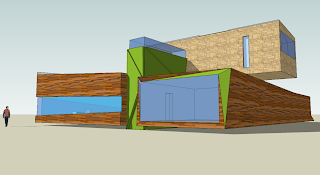
Having taken up the family tradition passed down generation by generation the Sea Captain is nearing the end of a long and painstaking career. Without the blood line to continue the business that has been in the family for nearly 200 years, the Captain finds he is feeling that old familiar feeling of instability. This feeling is not one associated with being at sea, but rather on land. His feet were unsteady on that surface that was a place of impermanence to him. Now he faced the same feeling for it seemed to him a life wasted, he was failing his ancestors, and all the values he had obtained from them were lost at sea.
He had started out a deckhand on his father’s boat, which had once belonged to his grandfather, fishing in the Baltic Sea. His farther armed him with all the tools necessary for taking over the business when the time came. But when his father died fairly young from a sudden hear t attack, he was thrown in the deep end. At only 16 he had to work the only way he knew how to support himself and his widowed mother. Conditions were hard and there were many times when she had to nurse him back to health through bouts of pneumonia. Tragedy struck again when he was 19. A gang had come to his mother’s house and in the intended robbery, she was shot dead. The bandits were never caught. He returned home late in the evening to walk in on what they had left and what was taken from him.
The Captain would never forgive himself for not being home to protect his mother and carried his grief and regret with him for the rest of his life. He kept to the business of fishing seldom returning to the empty house. Apart from working with his small crew, he mostly kept to himself. Through hard work he was able to support himself quite easily. Everything he ever had he had got through sheer hard work. Luck also came his way initially because of the demand for fish inland, and the relatively small number of professional fisherman in Riga. He began to sell fish in larger quantities to towns and cities throughout Latvia. Business and demand continued to grow so he sold his grandfathers boat and purchased a larger vessel, hiring more crew members. Soon the humble fisherman found that he was becoming quite wealthy enough to take the business to the next level.
He set up an initial meeting with his cousin in the Ukraine who ran a steel company. After several discussions and negotiations he travelled to the Ukraine and signed a contract involving the exportation of his fish and the importation of his cousin’s steel to Ukraine and Latvia respectively. This turned out to be the beginning to the end of his personal fishing career. While in the Ukraine, the Captain was introduced to his cousin’s wife’s sister, and it was on this visit that he fathered his only child. Having found out about this after he had returned to Riga, the captain couldn’t afford to leave his business and remained fishing in the Baltic over the pregnancy. 8 months later he returned to Ukraine a last time to collect his son, as once again death had struck and taken the boy’s mother in childbirth.
Perhaps it wasn’t the best thing to do, the boy would live with a man who lived a life at sea, with no mother, and no other family around him. But he thought it was equally as immoral to leave him in the care if his cousin and wife. He hired a nanny for the boy, and made sure he had a good early education in Riga. The Captain, by the time the boy was 6, had realised that there was a market for steel in Sweden and introduced this idea to his cousin and partner. He took a loan through the partnership and purchased a merchant vessel suitable to ship the steel across the sea to Sweden. He kept his fishing boat and crew and the fish caught continued to be exported to Ukraine.
In his eyes the Captain had the perfect arrangement set up so it would be easy for his son to fall into the business. He felt that 12 would be a suitable age for the boy to learn the ropes and settle into fishing. Within a few years he would run the fishing part of the business, until he was trained into the shipping business and could take over for the captain.
As it turned out the boy was top of his class at school and strove to finish high school. By the time he was 17 it was clear that he was reluctant to fish and destined for greater things. He won a scholarship to study at a prestigious university in Russia.
The Sea captain loved his son and allowed himself to let him go. He was alone once again free to feel the misery of loss that was etched into him. He loved the fresh bite of the air at sea blowing through his hair. It was the air he needed. He had been smoking high tar cigarettes since the age of 12 and suffered from bronchial asthma. The sea air was the only air that he could inhale easily. At 52 he knew his days at sea were numbered perhaps at the most another 5 years and the bronchitis he suffered would drive him to a peaceful life inland and indoors. To see the sea, to feel the breeze and to smell the all familiar smells of salt and timber was what would make him feel at peace. His son was lost to him probably forever; he was getting married in a month to his Russian fiancé. There was nothing left for the Captain to do but accept that he would either have to find a suitable man to replace him as Captain, or leave his family legacy and his hard work, to be washed away.
.jpg)
.jpg)
.jpg)














